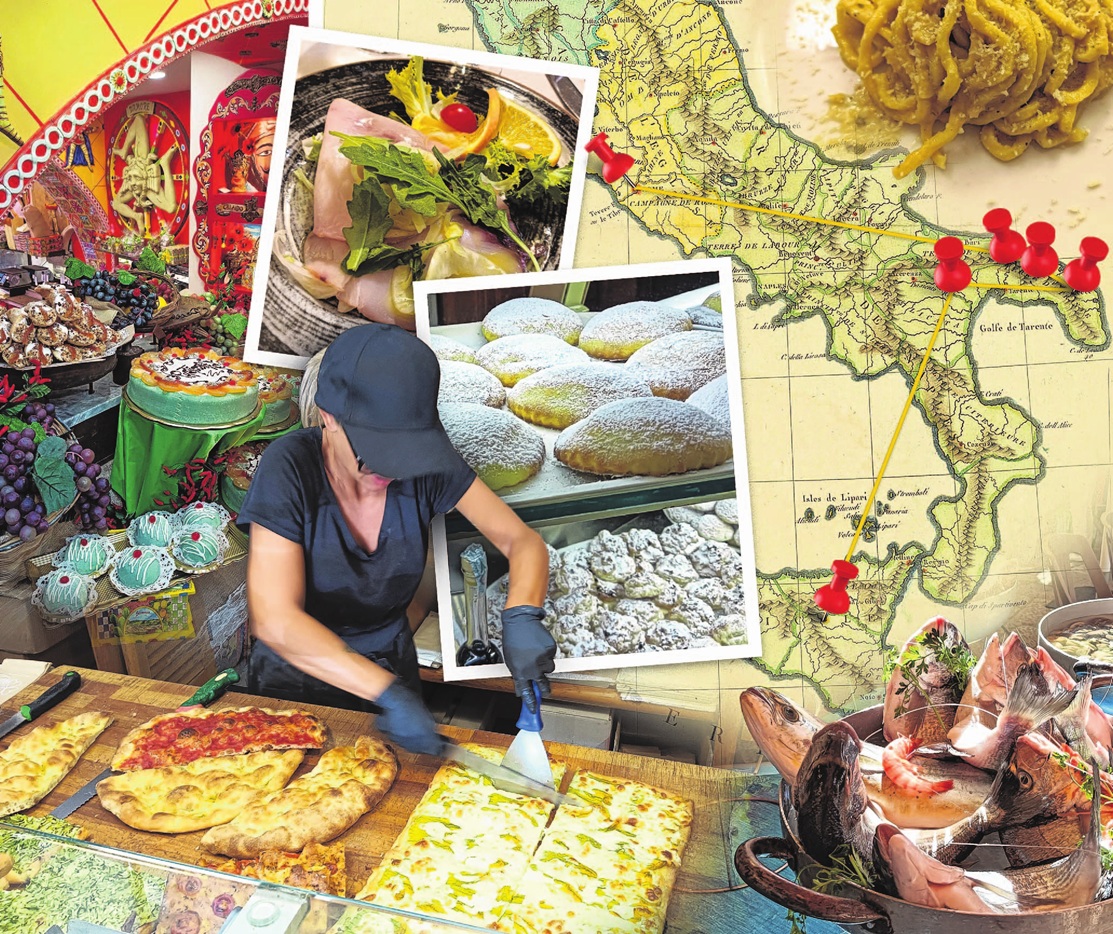
A Sicilian long lunch is something to behold.
We were told to bring our appetites and not over-indulge at the breakfast buffet or at our morning tea spot. So we were prepared, or so we thought.
The destination was the hilltop village of Forza d’Argro, just a little north of Taormina, famous for being featured in the Godfather Part II movie due to its authentic (untouched by modernity) architecture.
The restaurant was ready and waiting, its host welcoming us with open arms. A long table was set up and waiting for us.
We slid in to place, looking forward to what was to come. We all know of Italian hospitality and love of long lunches so anticipation was great especially when we learned it was to showcase seafood.
It started with a swordfish ceviche and then continued with a medley of fresh marinated seafood, mussels, octopus, calamari and oysters, then came the large red prawns, the gnocchi with shrimp, seafood and rice stew.
The next course featured seafood fried in different ways from the classic Sicilian dish of butterflied sardines stuffed with breadcrumbs, parsley and anchovies to crumbed shellfish.
To top it all off it was topped off with the famous Italian treats of cannoli and biscotti for dessert.
We were stumped. How do Italians eat this much? By about the sixth dish we were all feeling a bit worse for wear. Our Albatross Tours guide, born and bred in southern Italy, informs us it is part of the culture to offer an abundance of food, to not to would risk offending your guests.
From then on we were prepared for the onslaught. Seafood was also the highlight of another lunch, this time at a modern restaurant Vittorios right on the beach, which got a mention in BBC series Sicily Unpacked. At the end of a winding lane, it can only be accessed by car, so our bus remained on the nearest main road.
A highlight was the beautifully tender tiny octopus braised in a tomato sauce, followed by seafood linguine and pistachio-crumbed fish.
Another meal stood out for the setting as much as the food — eating a beautiful buffet featuring the region’s famous fish couscous and caponata el fresco under the trees with a view of olive groves.
We had already got used to Italians’ sweet tooth. Their penchant for an espresso and something sweet for breakfast means there are cafes or pasticceria everywhere with spectacular looking cakes, tarts, crostadas and pastries of all descriptions featuring locally grown almonds, citrus, honey and ricotta. One of our fellow travellers revelled in the tradition having tirimisu for breakfast at every opportunity. Another was determined to search out the "nun’s breast" mentioned by American actor and presenter Stanley Tucci, in his Italy series, that he found in Matera. The pillowy sponge cake filled with chantilly cream is shaped in a single round dusted in icing sugar. They were originally made by nuns in Pugulia for the poor of southern Italy in the 1700s.
Hearing of her success in finding the treat, we had to try it too. Light, fluffy and creamy we were not worried about the clouds of icing sugar that covered us.
Another treat we did not have to go far to find was Sicily’s famed cannoli. Large or small, they featured in every cafe or pasticceria, sometimes chocolate dipped and flavoured in different ways. The traditional large cannoli were decorated with candied orange rind and a cherry. Sitting alongside would be rum baba, a brioche-like cake soaked in rum syrup which you could have plain or filled with cream and fruits.
And while New Zealanders are big ice cream consumers, Italians must come a close second, with a gelato shop on nearly every street. Flavours range from the intense lemon and creamy pistachio, to chocolate and espresso. A common treat is gelato served in a brioche bun. Despite initial thoughts it was going to be a disaster to eat, what ice cream we did not manage to eat before it melted, soaked into the brioche, creating a soft, sweet irresistible dough.
On the hilltop Medieval town of Erice we tried its famous genovese, a shortcrust pastry filled with lemon scented pastry cream and dusted with icing sugar from the Pasticceria del Convento, the bakery where the famous Maria Grammatico learnt her trade before opening her own shop, which is so popular there are queues of people waiting to try her sweets.
But it was not all about sweet things, in Lecce we tried their savoury "hand food", rustici leccesi, a flaky pastry "pie" filled with a thick bechamel custard and tomato sauce.
Other popular "fast foods" were calzones stuffed with a variety of fillings from tomato sauce, mozzarella, ricotta and prosciutto and arancine or suppli in Rome. The rice balls, stuffed with mozzarella and tomato sauce, or ragu, crumbed and deep fried are a convenient and quick snack found everywhere in Italy.
And of course pizza, often available by the slice, with simple toppings and gloriously puffy bases. At these traditional bakeries you select your eats of choice and take your docket to the cashier near the door to pay. Some traditional pasticcerias also often have a selection of small meals in takeaway containers for customers to take for a quick lunch.
One of the nicest traditions in Italy is the aperitivo, a break in the early evening to have a drink — aperol or lemoncello spritz are popular — and a nibble of nuts, chips or olives before dinner which is usually later in the evening that we are used to here in New Zealand.
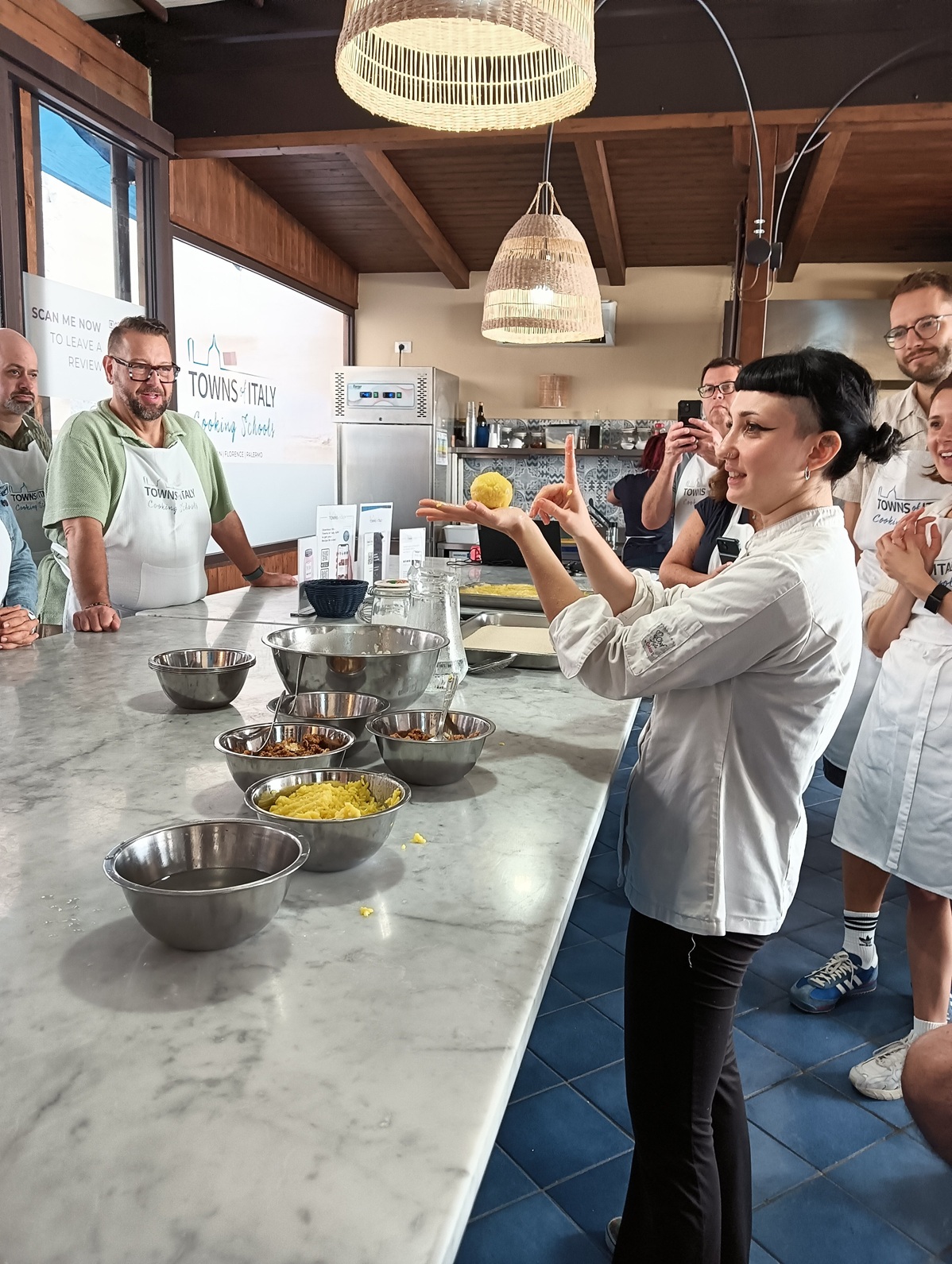 The chef shows how to roll arancine.
Step by step in an Italian kitchen
The chef shows how to roll arancine.
Step by step in an Italian kitchen

As a keen foodie, Rebecca Fox could not go to Italy without doing a cooking class.
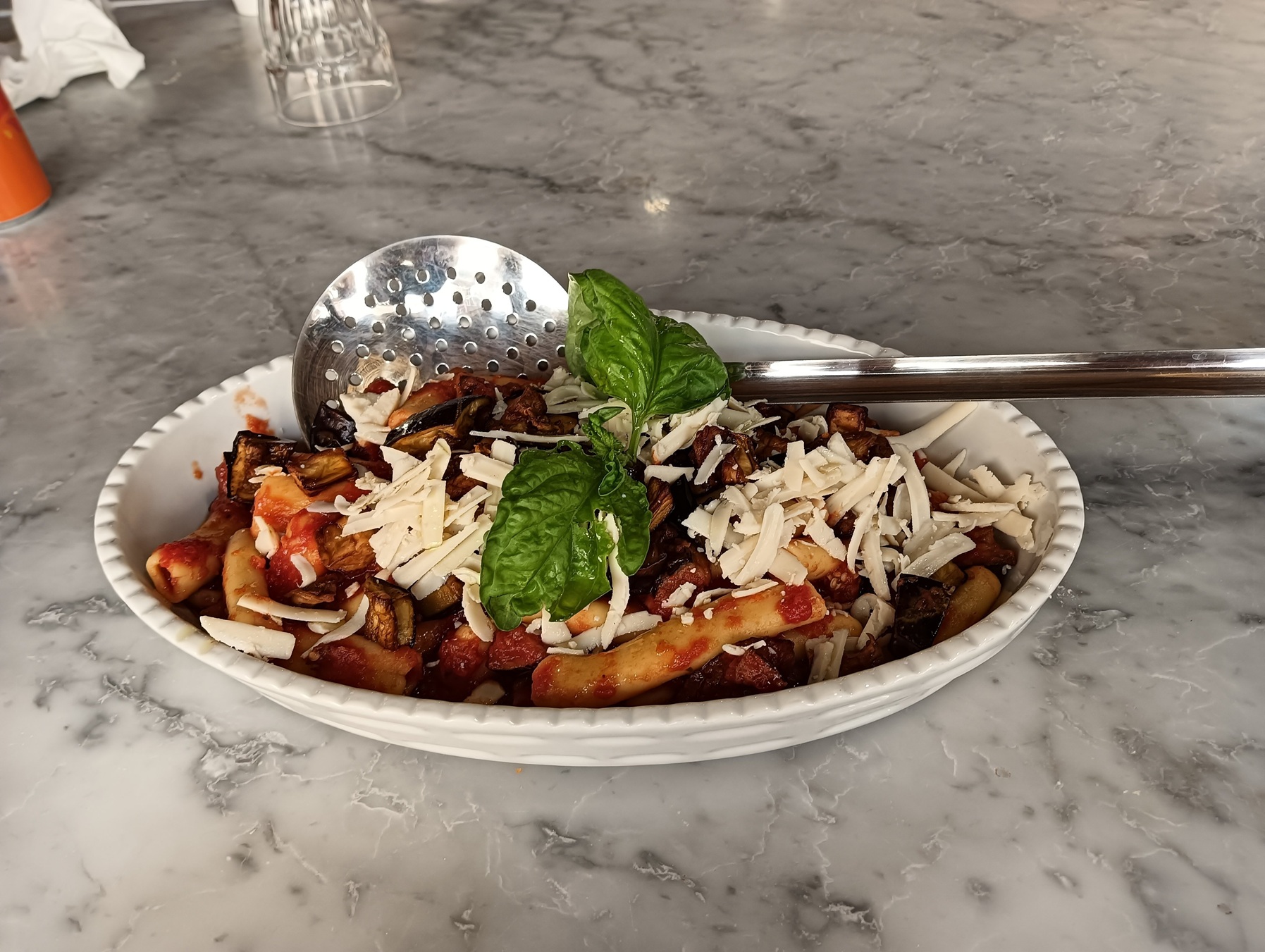
So on our last day in the city, we headed to Towns of Italy’s cooking school for a lesson in pasta, cannoli and arancine making.
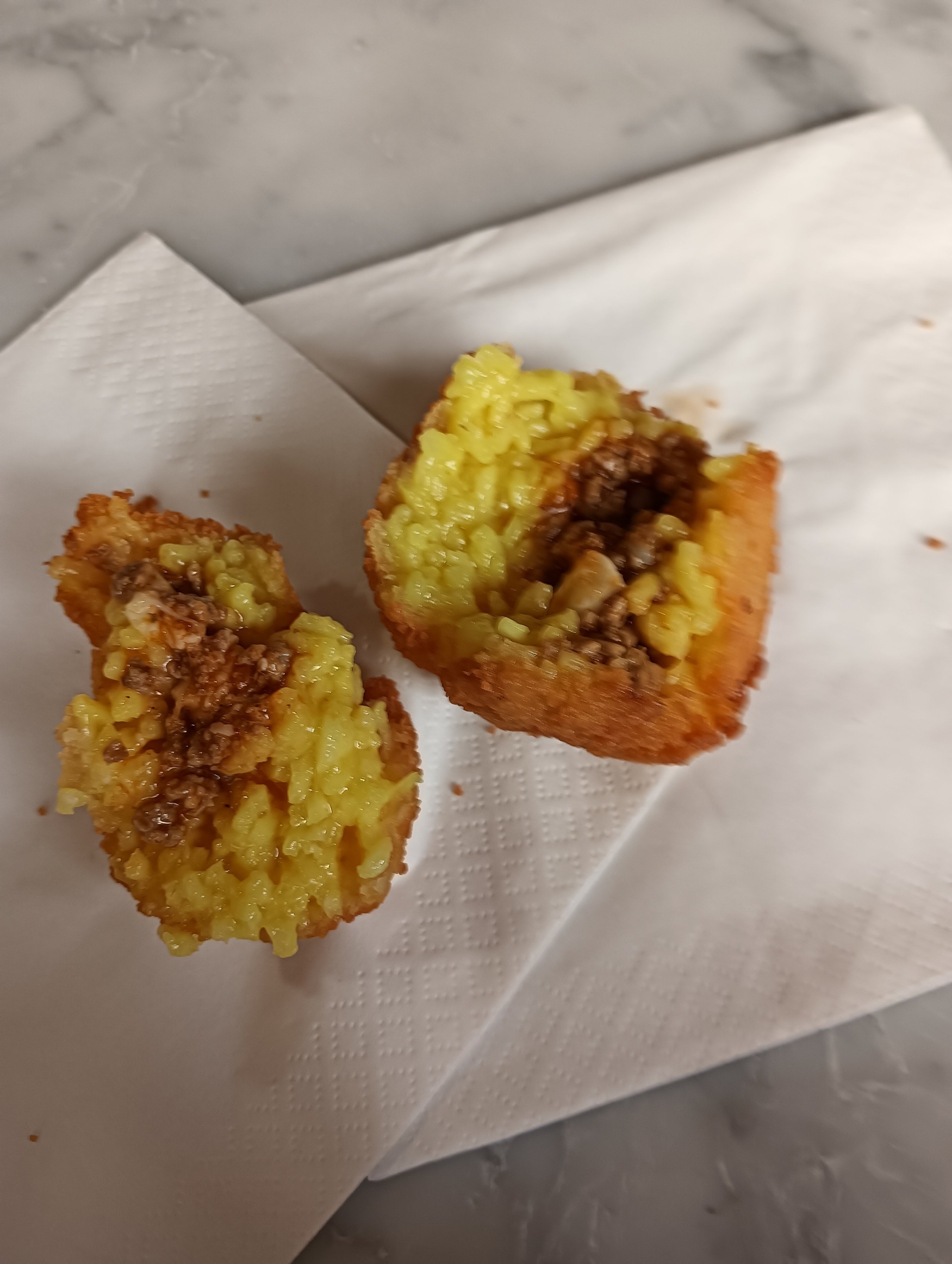
No visit to Capo St is complete without a visit to one of its most popular street food destinations, Arianma Dainotti, where we tried Sicily’s popular street foods chickpea fritters and potato croquettes, both tasty fried snacks. Our chef picked up some fresh ricotta and herbs for our cook.
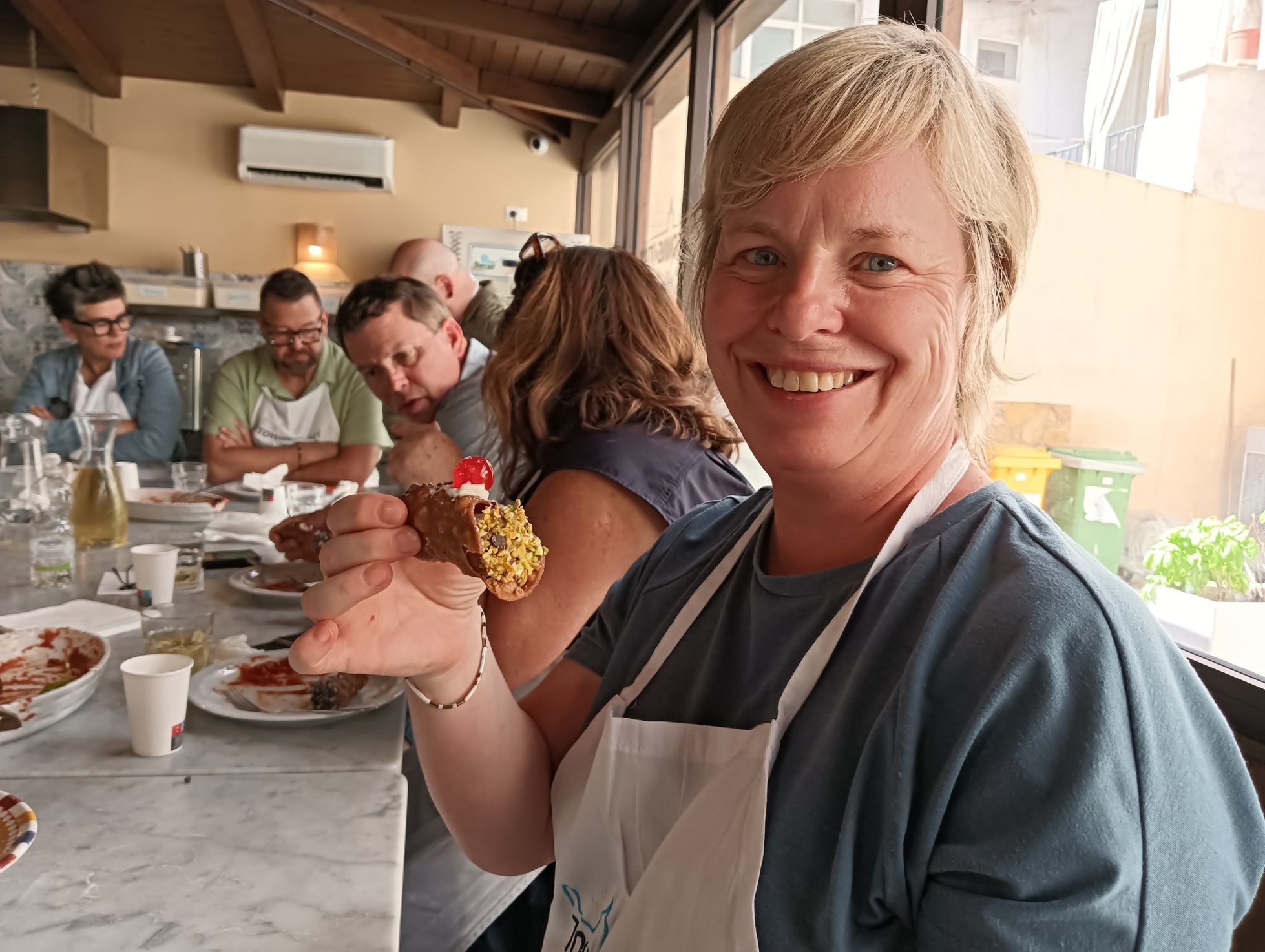
With the tomato sauce on for the pasta alla Norma, we move on to our lesson in how to make arancine. Using risotto and ragu made the day before, we learned how to stuff and roll an arancine, compacting it well, then dunking it in a simple batter of water, flour and egg, before rolling it in breadcrumbs and deep frying.
We soon discovered that was the easiest task of the day. Next came cannoli, made from a dough flavoured with Marsala wine (a specialty of the region) and cinnamon. The dough is rolled out very thinly — a pasta machine can make this quicker — before rounds are cut out and wound around special cannoli tube which flex to make it easier to remove the cooked shell after frying without breaking the shell. The trick is to leave plenty of room for the dough to puff up and to secure them tightly so they do not pop open. A sigh of relief goes around when everyone realises their cannoli stayed in one piece throughout the process and we then used a piping bag to fill them with a ricotta cream dunking each end in our choice of pistachio or chocolate or both.
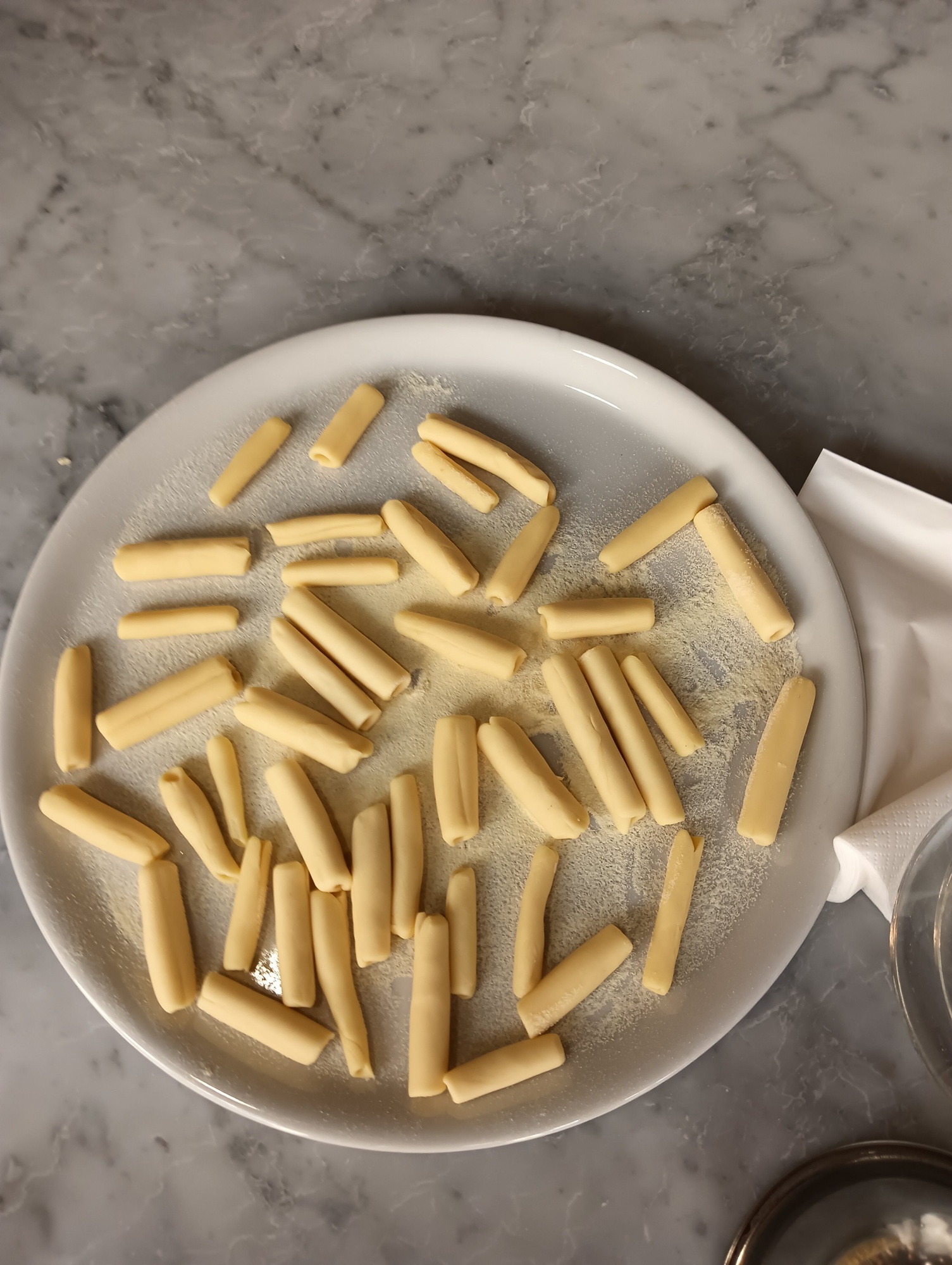
Once cooked the macaroni was added to the tomato sauce and the fried eggplant scattered over the top with hard ricotta grated over it.
Of course being made by our own hands it all tasted delicious. We even got a certificate to prove we had successfully completed the course.
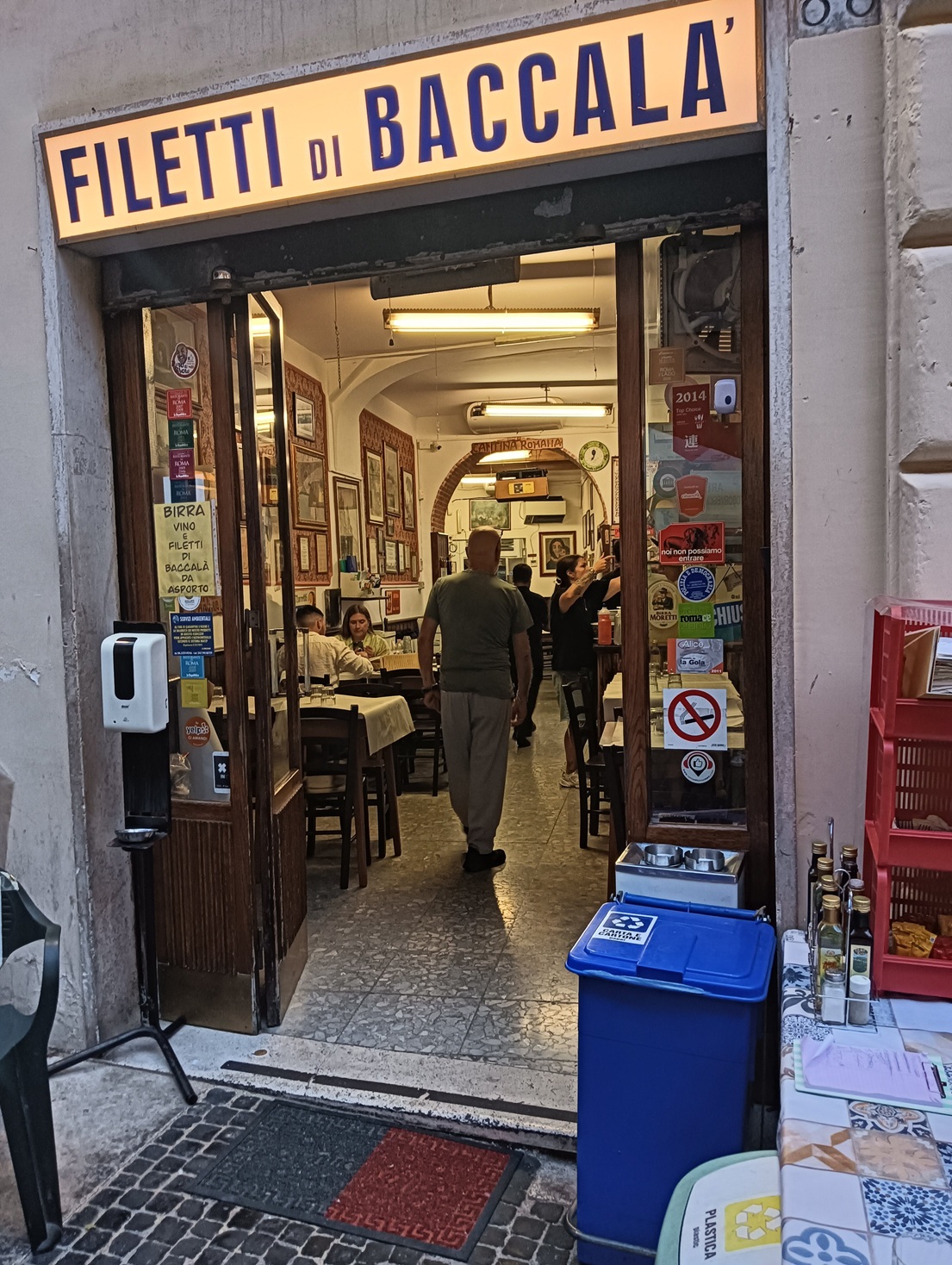 Dar Filettaro specialised in fried cod (below).
When in rome ...
Dar Filettaro specialised in fried cod (below).
When in rome ...

One of the best ways to learn about a new place is through their food. Rebecca Fox takes a food tour in Rome.
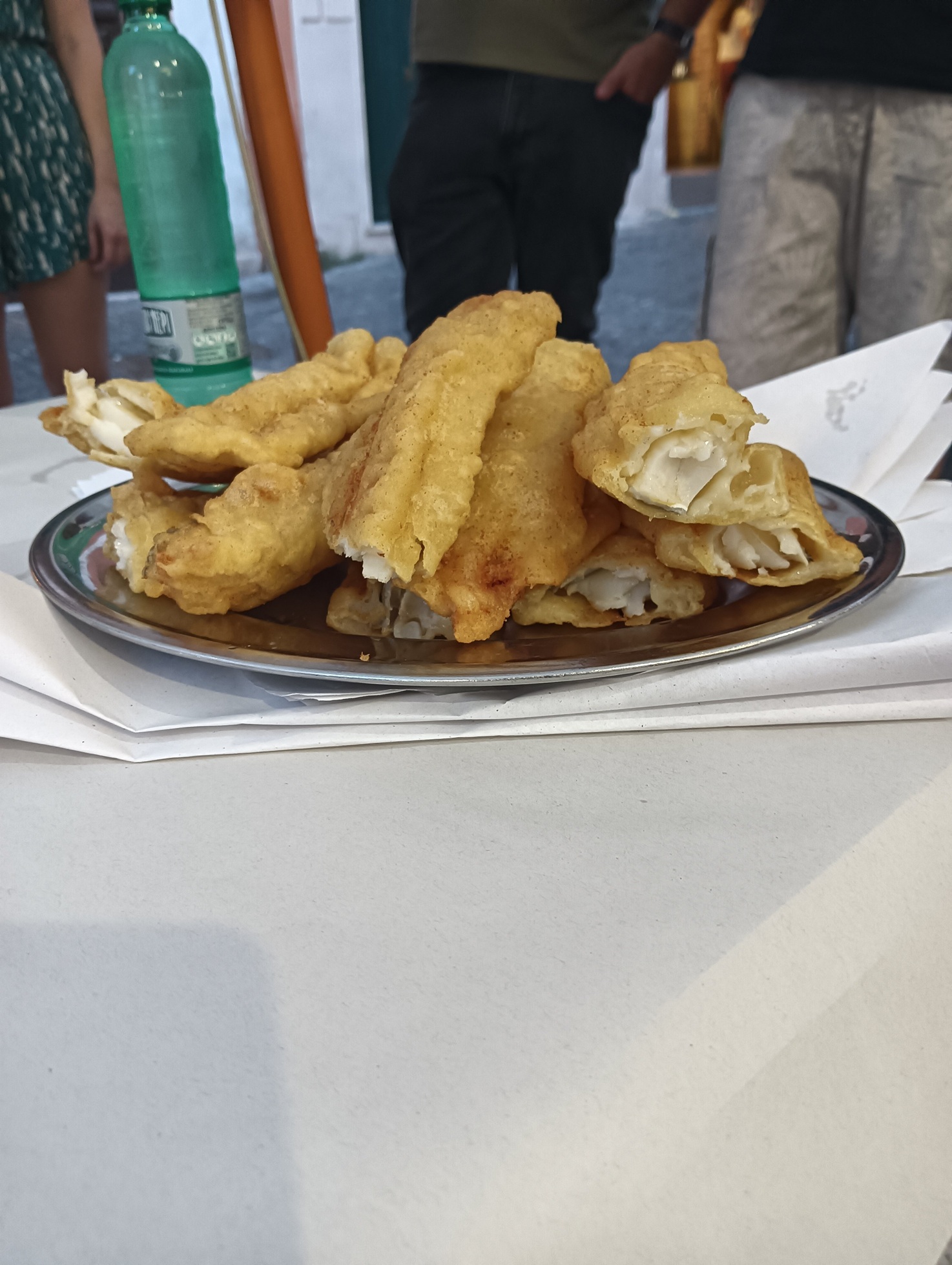
It also gave us an opportunity to see another side of Rome, away from the usual sights like the Vatican and Colosseum, as the tour we picked started in the neighbourhood of Trastevere, with its narrow cobbled streets, ancient houses, foreign universities and many pubs and restaurants.
Starting at Piazza Farnese, home to two amazing fountains and surrounded by palazzos now occupied by embassies, our guide led us to our first stop, a small family run salumeria, known for its amazing cuts of parmigiana and pecorino and prosciutto and salame which we got to try sandwiched with tomato.
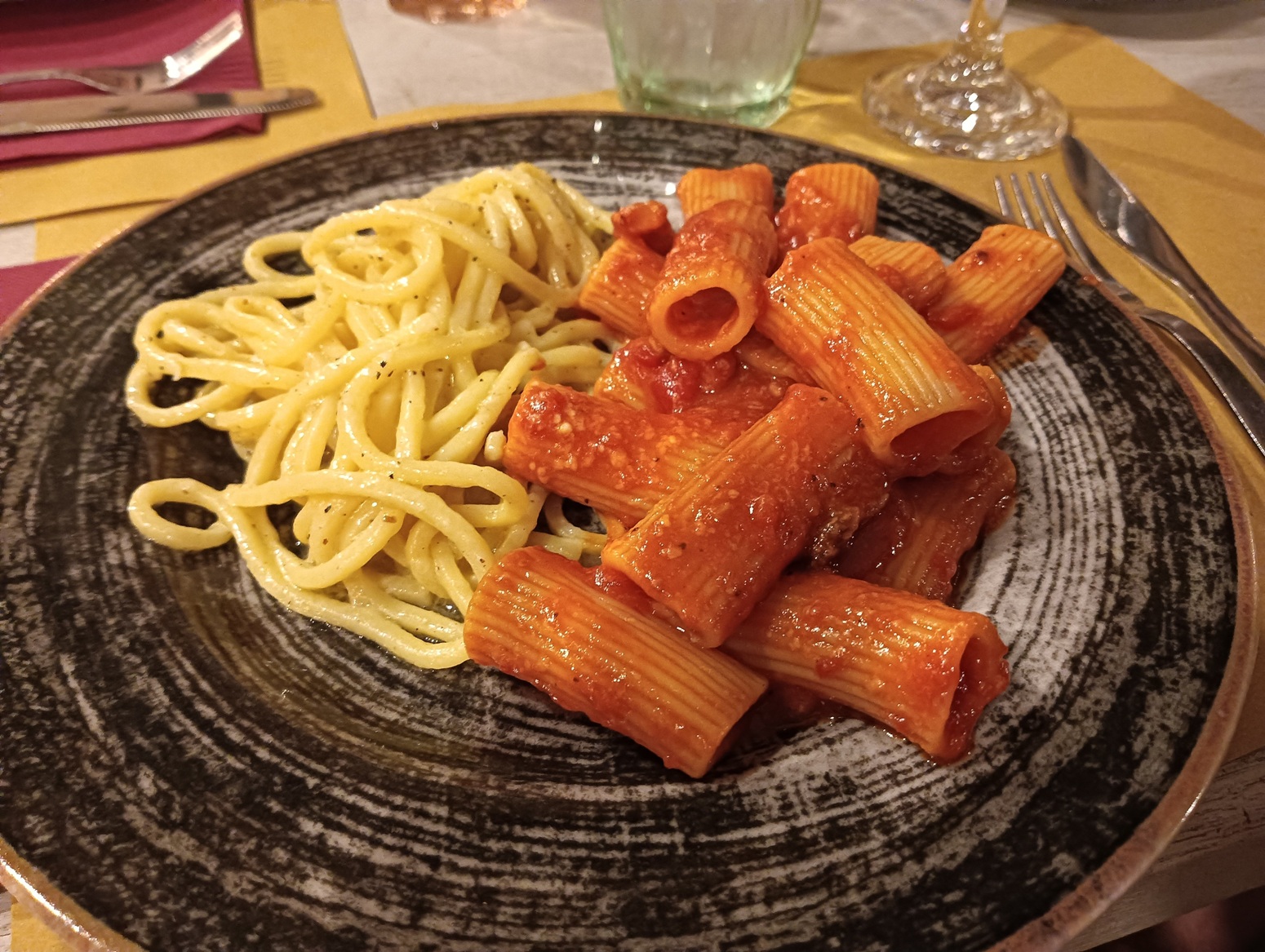
Crossing the River Tiber, we wound our way through a network of streets to a family owned trattoria where we sat down for a two-course dinner of pasta — Roman favourites cacio e pepe and amatriciana — followed by saltimbocca, very thin slices of veal topped with a slice of prosciutto and sage, and sauteed bitter greens.
With our stomachs pleasantly full, we had one stop left. No food tour would be complete without a stop at a gelateria and a lesson in what to look out for when buying gelato — avoid brightly coloured and decorated offerings which may not always be freshly made. I found what must be the most unusual gelato flavour I tried on the trip, bergamot, at Otaleg! (gelato spelled backwards) where they make the gelato on site. It is considered one of the best gelaterias in Rome for a reason.











